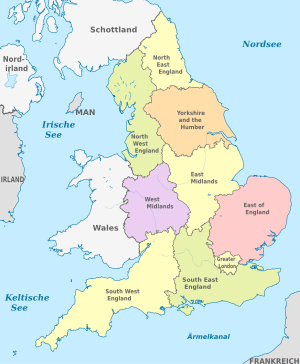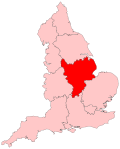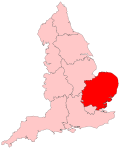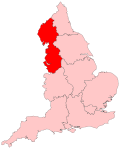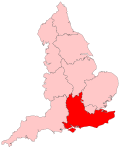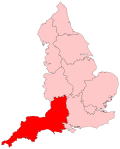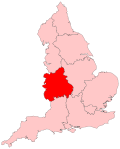Region (England)
| Regions of England |
|---|
In England, a region is the largest regional subdivision below the central government level.
function
The nine English regions are used for statistical purposes and formed constituencies in the elections to the European Parliament . Apart from Greater London , they have not had any other administrative functions since 2012.
history
Since the 1990s, UK policy has sought to strengthen local government power at the regional level. This program, known as devolution , resulted in elected bodies in Scotland , Wales and Northern Ireland .
In April 1994 the British government set up ten Government Office Regions under John Major in England , each with a Government Office . The Labor government, which came into office in 1997, also set up Regional Development Agencies and Regional Chambers in regions outside London . A referendum was held in Greater London in 1998, as a result of which the London Assembly , the Greater London Authority and the office of Mayor of London were established in 2000 .
In North East England on November 4, 2004 the establishment of a directly elected regional assembly was rejected in a referendum. As a result, there were no voting in other regions.
In June 2010, the Conservative and Liberal government announced the abolition of all administrative functions. As a result, the Government Offices were abolished in 2011 and the Regional Development Agencies on March 31, 2012 . Greater London was unaffected by these measures.
List of English regions
See also
For a further breakdown of the regions see: Administrative divisions of England
Individual evidence
- ^ Regional Development Agencies Act 1998 . Opsi.gov.uk. February 1, 2013. Retrieved February 7, 2013.
- ↑ The administrative structure of England (regions, counties, unitary authorities) ( MS Excel ; 211 kB)
